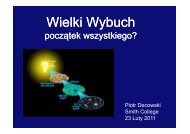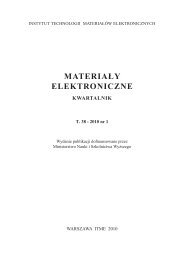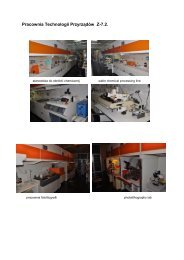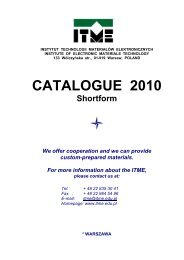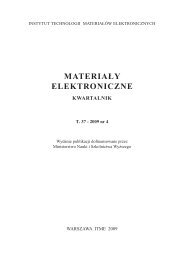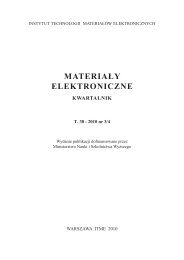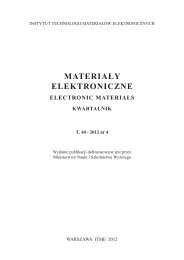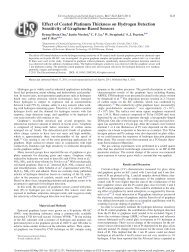Nr 1 - ITME
Nr 1 - ITME
Nr 1 - ITME
Create successful ePaper yourself
Turn your PDF publications into a flip-book with our unique Google optimized e-Paper software.
W. Stęplewski, G. Kozioł, J. Borecki<br />
adhesion force, it will stick to the walls of the aperture and to the pad. Area ratio<br />
≥0.66 is considered acceptable [1, 4-6].<br />
where: A P<br />
– pad area, A W<br />
– wall area<br />
A<br />
AREA RATIO = A<br />
Area ratio factor has the biggest single impact on transfer efficiency and repeatability<br />
of the solder paste deposit.<br />
Transfer Efficiency – The percentage of solder paste of the theoretical volume<br />
of the aperture that is transferred onto the pad (eq. 3, Fig. 1) [1, 4, 5, 7].<br />
VD<br />
Transfer Efficiency (%) = TE = × 100%<br />
V<br />
where: V A<br />
– volume aperture (theoretical volume), V D<br />
– volume deposit (actual or<br />
predicted volume).<br />
P<br />
W<br />
A<br />
(2)<br />
(3)<br />
Fig. 1. Transfer of solder paste onto pad.<br />
Rys. 1. Przeniesienie pasty lutowniczej na pola lutownicze płytki drukowanej.<br />
Transfer efficiency is the basic factor which determines correctness of solder<br />
paste printing. The principle of Release & Volumetric Repeatability is based on the<br />
relation between area ratio, transfer efficiency and standard deviation. The higher<br />
value of relative area ratio gives the higher the relative transfer efficiency and also<br />
the lower absolute standard deviation of the paste deposit (Fig. 2) [7, 8].<br />
Printing parameters have a crucial influence on volume and shape of solder<br />
paste deposit. The optimal value of printing parameters determines the maximum<br />
of transfer efficiency and the best shape of deposited solder paste.<br />
75




